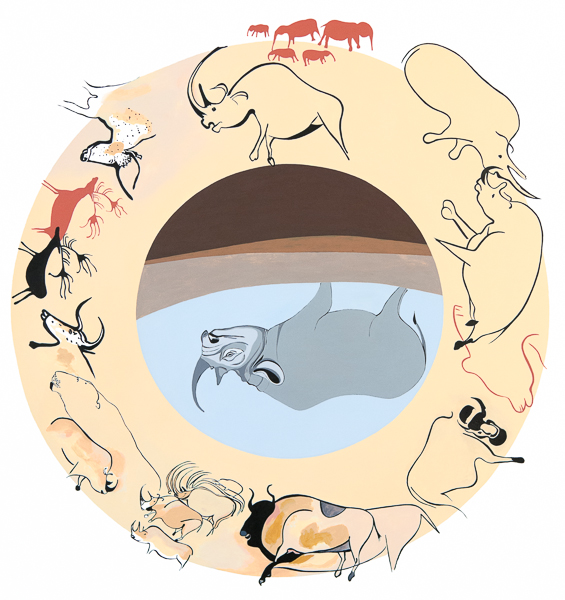
![]()
The West African Black Rhinocerous and the Chauvet-Pont-d’Arc Cave Paintings
One of the Earth’s majestic megafauna is the Black Rhinocerous. Of the four subspecies, the West African black rhinoceros was declared extinct in 2011. Megaherbivores are more than just passive grazers and browsers that occupy wild habitats. They change the habitat for other species. The Black rhino’s feeding behavior influences the structure and composition of the land. Their evolutionary persistence and rugged nature has adapted to a wide-range of habitats. During the Ice Age there were many swings of climate and with each change in climate, plant life changed. As the ice advanced, forests gave way to grassland, then grassland became tundra, frozen land where tiny flowering plants called forbs grew among sedges, mosses, and lichens. When ice shrank and land thawed, grassland spread and then forests took root. As plant life moved north or south, animals moved in search of food. People followed the animals.
Rhinos once roamed many places throughout Eurasia and Africa and were known to early Europeans who depicted them in cave paintings. Chauvet Cave in southern France is the oldest known cave with 300 paintings of animals that lived 32,000 years ago: horses, cave bears, hyenas, woolly rhinos, woolly mammoths, bison, aurochs, lions, reindeer, panthers, ibex, musteline, a bird, owl… all drawn in black, red, and yellow from charcoal and minerals ground up and mixed with cave water. The animal most often shown is the woolly rhino. One of the masterpieces of Chauvet Cave is the panel of Fighting Rhinoceroses and Four Horses Heads, a black charcoal drawing on rock. This scene depicts rhinos confronting each other. The animals are face to face, horns crossed, legs positioned indicating movement. The horses were added at a later date. A naturalistic scene such as this was rare in Palaeolithic art. The artists who painted at Chauvet Cave must have felt a profound connection with the natural world and its creatures. The beauty of each animal portrays a closeness with nature and co-existence with the sentient beings of this earth.